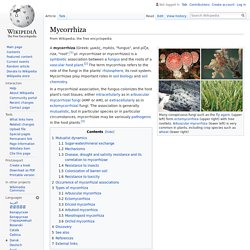

Tiger Lily - Tiger Lillies. The bulbs of its plants are boiled and eaten in some countries, especially China.

They taste like potatoes. The Tiger Lily, bears large, fiery orange flowers covered by spots. The name tiger probably refers to the spots on the petals. The flowers of this perennial can grow up to three inches in width. The Tiger Lily is also known as the Ditch Lily as it is found in and around ditches in large parts of America. Kingdom Plantae Division Magnoliophyta Class Liliopsida Subclass Liliidae Order Liliales Family Liliaceae Genus Lilium. 27 Medicinal Plants Worth Your Garden Space. Playful as kids are, accidents happen.

And the accident that befallen me at 7 years old was the feeling of the hot exhaust pipe of a motorcycle kissing the skin of my leg. Grandma was around and saw it. Immediately, she took out a knife and slice the thick lower part of the aloe vera plant by the garden and rubbed the exposed end on the burn. Looking back, I realized that it was important to have medicinal plants around the house cause you never know when you might need them. Pitbull Pump Submersible Pumps - Norton Safe Search. Sarsaparilla: Uses, Side Effects, Interactions and Warnings.
100 Expert Gardening Tips, Ideas and Projects that Every Gardener Should Know. Cookie barclose This website makes use of cookies to enhance browsing experience and provide additional functionality.

None of this data can or will be used to identify or contact you. This website makes use of third party cookies, see the details in the privacy policy. This website makes use of tracking cookies, see the details in the privacy policy. To learn more about how this website uses cookies or localStorage, please read our PRIVACY POLICY. By clicking Allow cookies you give your permission to this website to store small bits of data on your device. By clicking Disallow cookies, or by scrolling the page, you deny your consent to store any cookies and localStorage data for this website, eventually deleting already stored cookies (some parts of the site may stop working properly). To learn more about cookies and localStorage, visit Information Commissioner's Office. To disable all cookies through the browser, click on the corresponding icon and follow the instructions:
Pitbull Pumps. How To Grow Ginger Root - Planting Ginger Plant In Your Herb Garden. By Heather Rhoades Ginger plant (Zingiber officinale) may seem like a mysterious herb to grow.

The knobby ginger root is found in grocery stores but very rarely do you find it in your local nursery. So can you grow ginger at home? The answer is yes, you can. Not only is growing ginger plants possible, it is easy as well. How to Grow Ginger Root Planting ginger starts with finding some ginger root to plant. Advertisement.
How To Grow Ginger Root - Planting Ginger Plant In Your Herb Garden. Mycorrhiza. A mycorrhiza (Greek: μυκός, mykós, "fungus", and ρίζα, riza, "root",[1] pl. mycorrhizae or mycorrhizas) is a symbiotic association between a fungus and the roots of a vascular host plant.[2] The term mycorrhiza refers to the role of the fungi in the plants' rhizosphere, its root system.

Mycorrhizae play important roles in soil biology and soil chemistry. Mutualist dynamics[edit] Recent research into ectomycorrhizal plants in boreal forests has indicated that mycorrhizal fungi and plants have a relationship that may be more complex than simply mutualistic. This relationship was noted when mycorrhizal fungi were unexpectedly found to be hoarding nitrogen from plant roots in times of nitrogen scarcity. Researchers argue that some mycorrhizae distribute nutrients based upon the environment with surrounding plants and other mycorrhizae. Sugar-water/mineral exchange[edit] Mechanisms[edit] Disease, drought and salinity resistance and its correlation to mycorrhizae[edit] Resistance to insects[edit]
Recipe Listing - The Stoner's Cookbook. Ideas for Growing Vegetables in Small Spaces And Yards. An often-made mistake is that a garden requires a large surface.

Truth is you can have fruit, vegetables and flowers even if you have a small space dedicated for these in your yard. The secret is to plan properly. And when you’ve done this, the options available for you open up to a wider range! Sugars, starches, cellulose & discussion. Sugars Green plants manufacture sugars so that they all contain some quantity of sugar.

However, much of the manufactured product is used directly in plant metabolize that very little usually accumulates. Storage sugars are found in roots, as with beets, carrots, parsnips; in stems as in sugar cane, sorghum, maize and the sugar maple; in flowers, such as in palm trees; in bulbs like the onion; and in many fruits. There are several kinds of sugar, principal among which are sucrose or cane sugar, glucose or grape sugar and fructose or fruit sugar. They all seem to serve as a reserve food supply for the plant. Humans require sugar in their diet. Sugar is an especially valuable product derived from the plant world.
Sugar Cane Most sugar is derived from sugar cane, Saccharum officinarum. Commercial sugar cane is a cultivar that is not known in the wild state. Cultivated varieties today are usually hybrids of Saccharum officinarum, the “noble cane,” with other hardier species.